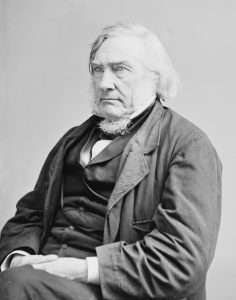
It may seem early to speculate about staffing a new administration. But both Kamala Harris and Donald Trump, like all major party nominees before them, have transition teams busy collecting resumes and thinking through who the new president should appoint come January. Harris’s transition team has an opportunity to embrace a personnel-is-policy approach similar to what worked well for the current administration, where ideologically aligned presidential appointees (and arguably the most diverse) transformed economic governance in ways that were inconceivable just a decade ago.
The Biden-Harris administration offered a pro-public and post-neoliberal conception of the economy and how government should work. As importantly, it found diverse leaders and staff to implement those policies.
For instance, members of the National Economic Council, like Sameera Fazili, Joelle Gamble, and Bharat Ramamurti helped shape what we’ve come to know as “Bidenomics,” which has delivered big, if yet unfinished, economic progress. The Treasury Department’s Deputy Secretary Wally Adeyamo also played a crucial role in designing the Inflation Reduction Act.
Sabeel Rahman at the Office of Information and Regulatory Affairs (OIRA) helped redesign the regulatory review process to “increase the transparency and inclusiveness of OIRA’s engagement with the public,” making meetings with the public and interested groups much more accessible. OIRA, part of the President’s Office of Management and Budget, plays a crucial role in approving proposed regulations from across the federal government. Its work is wonky and has largely been out of public site. The administration’s steps to open up the process are a huge deal because OIRA’s work is essential to how the executive branch actually works.
The Democrats have done a remarkably good job of warning about the dangers of Project 2025 and the terrible policies it promotes, including its blueprint for decimating the civil service and replacing careerists with conservative cronies. Knowing how government shouldn’t be staffed is necessary but not sufficient. If we are “not going back,” what are we going toward in terms of filling the thousands of positions a president can fill?
Lina Khan, the chair of the Federal Trade Commission (FTC), who has written for this magazine, offers an important example of who Democrats should appoint and what they should do.
The 35-year-old has the highest profile of any FTC head in years because she restored the century-old agency’s antitrust focus. Khan has proselytized the anti-monopolist message, even appearing on The Daily Show. This kind of public-facing approach does a few essential things.
First, engagement with mass culture elucidates what government does. In 2023, Pew Research found that only 66 percent of respondents could identify the party in power in the House and 63 percent for the Senate. When Americans don’t know Democrats control the Senate, they’re even less likely to know what the FTC is, let alone how Khan has invigorated its strong antitrust focus and how that can help consumers and entrepreneurs. Governing is about educating Americans about what the government does. Khan has wisely chosen to go all out to build public awareness about her charge, engaging with mass culture, not just talking to CNBC but Jon Stewart. And this is where diversity helps. That Khan is wickedly smart, highly credentialed, a millennial, a Pakistani-American, and a mother helps her relate to many Americans who may never think about the FTC but also may not have imagined someone like them could shape policy.
Second, in light of regulatory onslaughts, like the Supreme Court’s Loper Bright decision rolling back the Chevron Doctrine, connecting with the public feels more important than ever. If people don’t understand the vital role played by the Environmental Protection Agency, for example, why would they be upset when its work is hindered?
Third, having visible government leaders engaged with popular culture highlights the importance of public service as a career. Given the Right’s successes in filling roles—particularly in the judiciary—the Left has started to realize how critical this is. One example from the Roosevelt Network, which I oversee, is how college students in one of our fellowship programs became, as they put it to me, “obsessed with the CFPB” after getting face time with its Consumer Financial Protection Bureau staff. This is, of course, the agency whose creation was spearheaded by Elizabeth Warren in the wake of the financial crisis and is headed by Rohit Chopra, a Warren ally, who used the CFPB’s powers adroitly just this week to impose over $100 million in fines on Navient, formerly known as Sallie Mae, and prohibit it from directly servicing student loans. To build a more inclusive federal workforce, we need young people excited about what those agencies can do. More exposure for leaders like Chopra and Khan helps.
The “new way forward” of which Harris speaks starts with public excitement about what government can do and how it can deliver big wins for us all.
The post Personnel is Policy, Project 2025, and a Lesson for Democrats appeared first on Washington Monthly.


 3 months ago
10
3 months ago
10 









 Bengali (Bangladesh) ·
Bengali (Bangladesh) ·  English (United States) ·
English (United States) ·